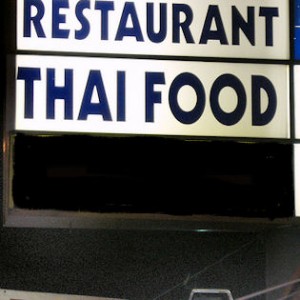 Reporting from Satire City, USA, August 2110
Reporting from Satire City, USA, August 2110
Advocates of inclusive eating celebrated a success today when the President signed into law the Inclusion of Disordered Eaters Act, which will provide federal funding to integrate Americans with eating disabilities into the mainstream of society. The legislation’s proponents say that it is much needed in light of today’s mysterious epidemic of Eating Spectrum Disorder (ESD), a major public health crisis.
A century ago, when ESD was wholly unknown, policymakers became concerned about rising obesity rates. They also found it troubling that some people were not eating enough because of poverty, fad diets, anorexia, and other issues. Taking as their model the venerable American compulsory education system, they set up State Boards of Eating, tasked with ensuring that all citizens would receive free and adequate nutrition.
After numerous studies by state-funded commissions, America’s eating experts reached a consensus: Thai food was the healthiest. Counties imposed new property taxes to build and staff Thai restaurants where carefully measured portions would be served free of charge. Although privately operated restaurants and home cooking were not banned, every cook now had to comply with detailed state regulations governing the preparation of Thai food.
Most people agreed that compulsory eating was a great success. Under the new system, nobody ever went hungry for lack of money, and obesity soon disappeared along with soda pop and potato chips. On average, the American population became much healthier now that they were no longer free to make bad food choices. Although the economy took a hit when producers of non-Thai foods had to go out of business or change their operations to produce only state-approved food items, the corporations were robust enough to recover eventually.
By then, another problem was starting to become apparent: not everyone could eat Thai food without difficulty. Indeed, peanut allergy made it life-threatening for a small number of people. Others who had unusually sensitive stomachs found the spices quite indigestible. And there were some who, for reasons unknown, took a great dislike to either the taste or the texture.
Because the county-owned restaurants were designed to serve large crowds efficiently and at low cost, those who asked for individual accommodations in their meal preparation had little success with their requests. As a result, they often ended up eating all their meals in the isolation of their homes, where they could privately cook their food in ways that they found more palatable. Sometimes they had to dodge zealous compulsory eating officials who demanded that they cease and desist from violating state requirements. Their neighbors were likely to taunt and shun them because of their odd antisocial behavior in avoiding the restaurants, and employers were reluctant to hire them.
Not surprisingly, under these circumstances, parents found it quite alarming when a young child began to show signs of picky eating. Urged on by early-awareness campaigns, many parents rushed their little ones to psychiatric experts who had created a new diagnostic category, Eating Spectrum Disorder, defined in terms of behavioral criteria such as picking the peanuts out of one’s Pad Thai or surreptitiously wrapping hot pepper chunks in one’s napkin. The experts cited gloomy statistics on how many adult ESD sufferers were unemployed, still dependent on their parents, and bereft of friends and romantic relationships.
Although no cure existed for the tragic affliction of ESD, the experts somberly declared, it was possible to ameliorate the symptoms by way of intensive behavioral intervention. The most widely used program, Applied Eating Analysis, consisted of repeatedly giving a child small portions of the various state-approved foods while keeping careful records of the child’s behavior on each occasion. Even children with the worst allergies and picky eating habits, its practitioners claimed, could one day be indistinguishable from their peers once they became habituated to eating proper foods.
Popular news reports cited cost estimates of the huge burden that was projected to result from the ever-growing number of diagnosed ESD patients, most of whom surely would have a dismal future if more efforts were not made to integrate them into society. It was against this backdrop of urgency that inclusive eating legislation was passed to ensure all ESD children would have access to the therapies and accommodations needed to enable them to eat in the public restaurants with their nutri-typical neighbors.
“This is a huge victory,” said leading ESD advocate Willa Bobbalot, founder of the National Association for Normality in Eating, whose two grandchildren both have been diagnosed with the disorder. She added, “Of course, we’re all still working toward that wonderful day when we find the cure to make them eat just like everyone else.”
Gwen McKay on 08/18/10 in featured, Society | 2 Comments | Read More
Comments (2)


Brilliant!
Thanks Rachel, glad you enjoyed it!